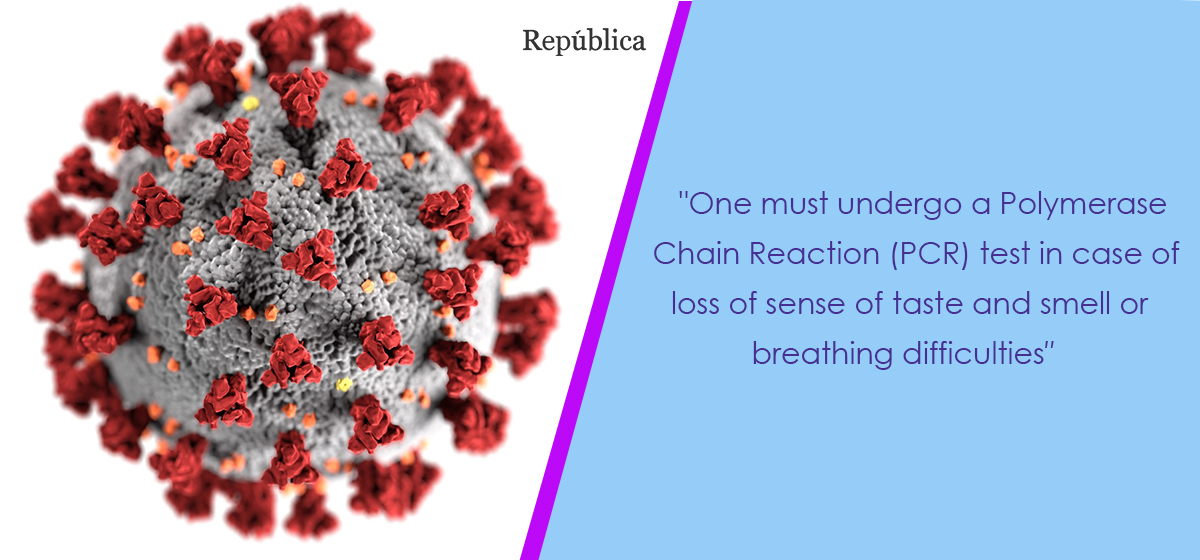
OR
How to know whether it is flu, common cold or COVID-19?
Published On: October 12, 2020 01:32 PM NPT By: Kunga Hyolmo

KATHMANDU, Oct 12: In general, flu is worse than common cold and COVID-19 is the worst among the three.
While the entire globe is grappling with the fear of COVID-19 transmission, some of the symptoms that overlap in these three diseases have made it difficult for the general public to know which of these three illnesses they are suffering from.
Experts believe that unless a test is carried out, it is very hard to know.
According to Public Health Expert Dr Rabindra Sameer, one must undergo Polymerase Chain Reaction (PCR) tests in case of loss of sense of taste and smell or breathing difficulties.
All these three diseases are respiratory infections. The common cold can be caused by more than 200 different viruses. Among these viruses, rhinovirus is the most common one. Likewise, flu is caused by Influenza A, B and C viruses.
One of the major differences between cold and flu is that one can catch cold any time a year but flu is seasonal.
Similarly, the novel coronavirus disease (COVID-19) is caused by the new coronavirus (SARS-CoV-2). So far no vaccine or medicine has been developed against these diseases. Some have recovered without any special treatment while ageing groups, one with chronic diseases and children are seen vulnerable against COVID-19.
All these three diseases spread when a sick person sneezes and coughs, sending the virus-filled droplets flying into air. It can also transmit if one touches or uses the surfaces or things used by the infected people.
Dr Sameer maintained that the body temperature of people suffering from cold or flu is far lower than that of those suffering from COVID-19. “Cough is common in cold and flu but it is frequent and continuous in case of COVID-19. Most importantly, flu or cold causes body pain where COVID-19 especially causes joint pain,” he added.
One of the major differences among COVID-19, cold and flu is the incubation period. The cold and flu are very much contagious in the first three to four day of exposure to the virus while the people with COVID-19 are likely to feel sickest in the second and third week after being infected.
Besides, COVID-19 is more likely to cause a loss of sense of taste and smell than cold and flu. But not everyone who suffers from COVID-19 shows this symptom.
Following are the symptoms possessed by a common cold patient:
· Runny or stuffy nose
· Sore throat
· Sneezing
· Cough
· Headache and cough
· Mild tiredness
Symptoms of Flu:
· Dry, hacking cough
· Moderate or high fever
· Sore throat
· Shaking chills
· Headache
· Severe fatigue that may last up to a week
· Nausea, vomiting and diarrhea ( most common in children)
Symptoms of COVID-19
· Fever or chills
· Cough
· Shortness of breath or difficulty breathing
· Fatigue
· Muscle or body aches
· Headache
· New loss of taste or smell
· Sore throat
· Congestion or runny nose
· Nausea or vomiting
· Diarrhea
This list above does not include all the symptoms. These symptoms may differ from person to person. The best possible way to know the difference is to undergo a test.
Wearing face masks, avoiding unnecessary gatherings and crowds, maintaining social distance and proper hand hygiene has been universally accepted as the best possible way to avoid and prevent these viral diseases.
You May Like This

As Oli government limits its role to counting deaths during the greatest public health crisis, people are dying at an alarming rate
Experts say the government has decided to shred the constitution ... Read More...

Cold, flu hit patients in Bharatpur Hospital to be treated separately
CHITWAN, Feb 2: The Chitwan-based Bharatpur Hospital has allocated a separate space for purchasing tickets and health examination for the... Read More...

Say Goodbye to Cold and Flu This Rainy Season
Finally, the rainy season has come to relieve us from the hot summers, but it also brings along many kinds... Read More...





Just In
- EC decides to permit public vehicles to operate freely on day of by-election
- Fugitive arrested after 26 years
- Indian Potash Ltd secures contract to bring 30,000 tons of urea within 107 days
- CAN adds four players to squad for T20 series against West Indies 'A'
- ‘Precast' technology introduced in the construction of bridges along Muglin-Pokhara road
- Leopard attack injures young man in Kanchanpur
- SC rejects writ petition filed against Home Minister Lamichhane
- Nepal and China sign two agreements in the presence of Finance Minister Pun














Leave A Comment